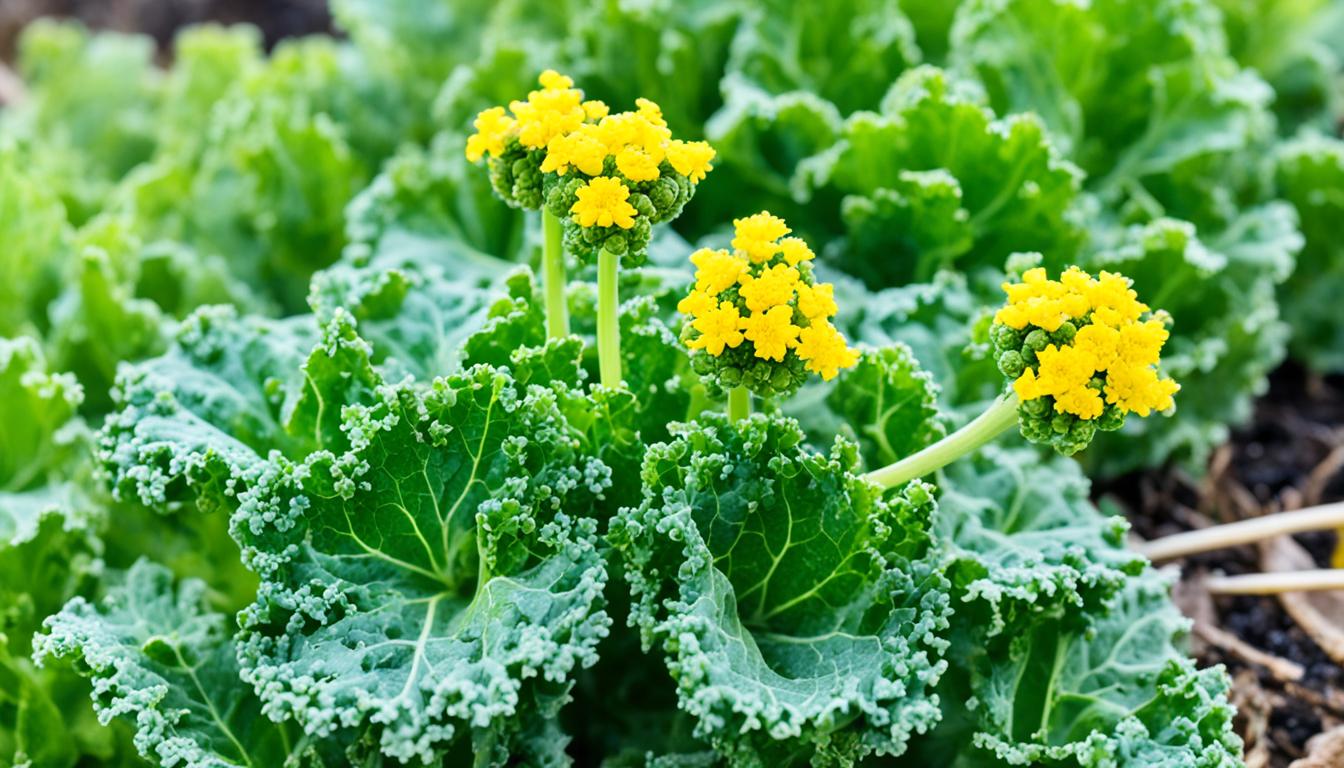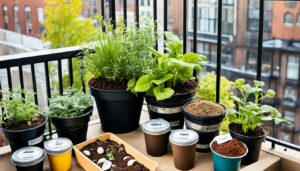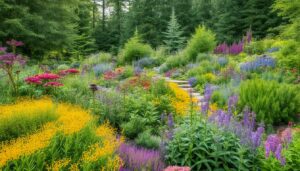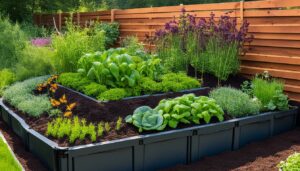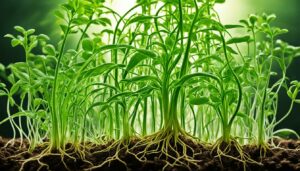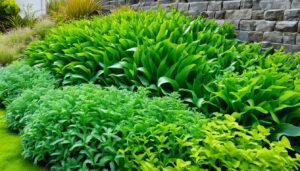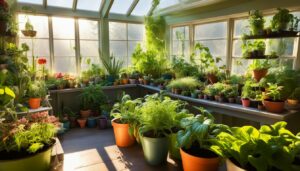Have you seen your kale plants flowering and wondered what to do next? Transforming what seems like waste into something valuable is both fun and rewarding. When kale begins to seed, you get chances to collect seeds for later or to plant again.
As kale ends its growth cycle, the adventure of preserving seeds starts. It includes steps like protecting the plants in winter, letting them bloom in spring, and waiting for seed maturity. Gathering these mature seeds can make you feel self-reliant and lets you create stronger plants for your garden’s conditions. Yet, this seed-saving task needs time and space you could use to grow other crops.
Key Takeaways
- Learning what to do with seeding kale can unveil new gardening ideas.
- The process involves overwintering, spring blooming, and waiting for seeds to mature.
- Collecting kale seeds promotes independence and learning.
- It helps in breeding plant types that thrive in particular areas.
- Remember, saving seeds takes up time and garden space, affecting other planting plans.
The Lifecycle of Kale: From Seed to Seed
Kale’s life starts as a tiny seed. It grows through stages like planting, overwintering, blooming, and seed maturation. For gardeners, understanding each phase is key. This knowledge helps boost kale harvests and future garden success.
Understanding Overwintering
Overwintering is a crucial step for kale. It involves the plant surviving winter to bloom in spring. Managing kale during winter builds its strength. This ensures it can flower and make seeds well.
The Importance of Flowering
When kale flowers, it’s a major lifecycle event. Flowering may make kale look different, but it’s important for seeds. Letting kale bloom adds beauty to your garden. It also starts the seed-making process.
How Seeds Mature on the Plant
Seed pods grow on kale and need time to mature. Keep an eye on your plant. Harvest seeds when half the pods turn dry and brown. This prevents seeds from spreading before you collect them.
Learning to save kale seeds is valuable. It helps you keep your garden productive. You’ll know when to overwinter plants and the best time to harvest seeds.
Harvest Kale Seeds: A Step-by-Step Guide
Getting kale seeds ready for harvest is both exciting and detailed. It needs careful steps and some waiting time. This guide helps you become more self-reliant in gardening by ensuring a bountiful seed harvest.
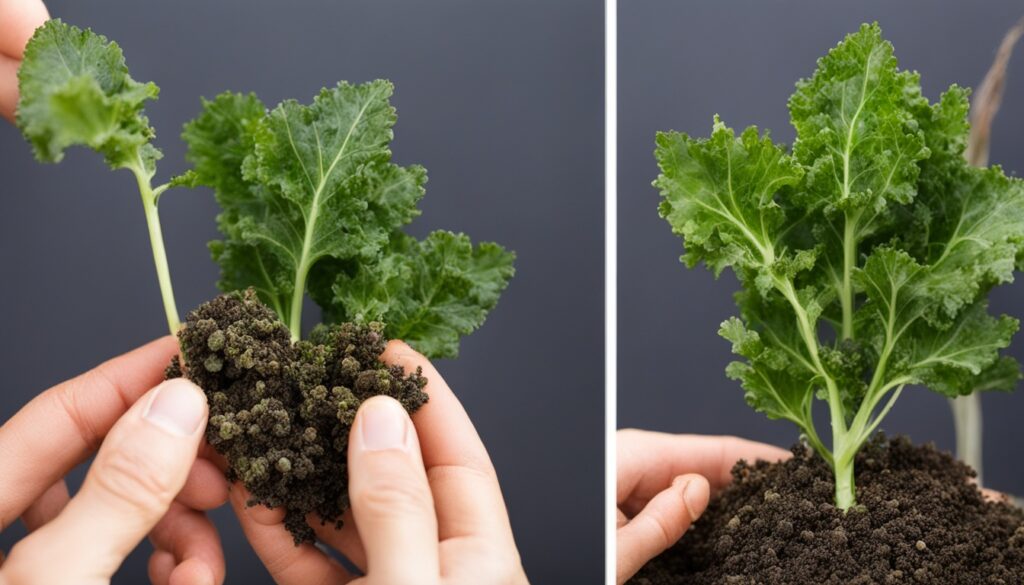
Chopping Down the Plant
First, see if the seed pods are dry. You know they’re ready when they’re brown and easily break. Then, carefully cut the plant just above its base. Take care not to harm the seed pods.
Shaking and Collecting the Seeds
The next part involves a bit of shaking. Gently shake the cut plant over a big container. This is to catch both seeds and chaff.
- Specific Tools Needed: Large container, gloves, clean scissors.
- Optimal Conditions: Do this on a dry day with little to no wind.
- Best Practices: Shake carefully to collect as many seeds as possible.
Cleaning and Storing the Seeds
After collecting the seeds, you need to clean them. Use a fine sieve or your hands to do this carefully. Storing the seeds correctly is key. Put them in an airtight container and keep them somewhere cool and dark. This helps them stay good for planting.
| Step | Action | Details |
|---|---|---|
| 1 | Chop Down Plant | Check for dry, brittle seed pods before you chop. |
| 2 | Shake and Collect | Shake it over a container to catch the seeds. |
| 3 | Clean Seeds | Use a sieve or your hands to remove chaff. |
| 4 | Store Seeds | Keep cleaned seeds in an airtight container. |
By sticking to this guide, you’ll master kale seed harvesting. This ensures you’ll have plenty of seeds for your garden next season.
Using Flowering Kale in Your Kitchen
Every part of the flowering kale plant, like blooms and young seedlings, is edible. They enrich your recipes with new flavors and nutritional benefits. This makes your kitchen adventures exciting and healthy.
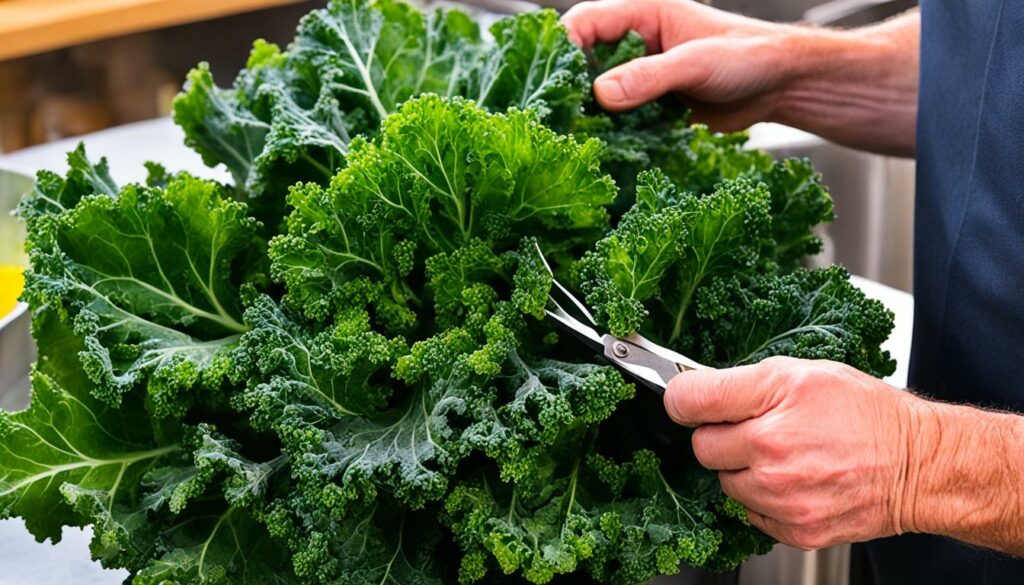
Eating the Flowers
Eating kale flowers is a Joy. You can toss them in salads for a sweet taste. Or sauté with garlic and olive oil for a vibrant side dish. They’re also great in frittatas and muffins, adding flavor and a splash of color.
Uses for Young Seedlings
Young kale seedlings are not to be wasted. These greens are nutrient-rich and have a peppery flavor. Perfect in salads, they can also bring life to stir-fries or soups. Adding them means boosting your dish’s health value.
Using all parts of kale, like the flowers and seedlings, brings excitement to the table. Dare to try new things and make your meals nutritious and tasty. It’s a fun way to explore the benefits of kale in your diet.
Best Practices for Collecting Kale Seeds
Collecting kale seeds is great for any gardener. Follow a few key steps to get a good seed harvest. These steps will keep your seeds strong for later.
Choosing the Right Plants
For great seeds, pick strong, healthy kale plants. These plants should look good and be free of disease. Choose plants that have done well, showing strength and growth.
Timing Your Harvest
The right timing is key for harvesting kale seeds. Collect them when the pods dry but before they open. Watching your plants will tell you the perfect time to harvest.
Ensuring Seed Viability
For seeds to stay good, clean and store them right after you pick them. Clean them well and keep them in a cool, dark spot. Sealed containers help keep them even longer.
Following these tips will improve your crops. Picking, harvesting, and storing seeds right leads to a great gardening year.
Pros and Cons of Letting Kale Go to Seed
Deciding to let your kale go to seed has both pros and cons of kale seeding for any home gardener. You will face choices that could change how you see gardening.
On the plus side, letting kale seed means you get to watch it grow full circle. It’s rewarding to see your kale move from seed back to seed again. By choosing seeds from your best plants, you can create kale that truly suits your garden’s climate.
But, letting kale seed isn’t all good news. These plants take up a lot of space that you could use for other veggies. They can also make your garden look messy. And, saving seeds takes a lot of patience and effort. You need to let the seeds mature, which takes time and work.
Here’s a simple breakdown of the main pros and cons of kale seeding:
| Pros | Cons |
|---|---|
| Enhanced understanding of plant lifecycle. | Significant space requirement. |
| Independence from commercial seed providers. | Untidy garden appearance. |
| Development of resilient plant varieties. | Significant time investment in kale seed saving. |
| Potentially tailor-made for your microclimate. | Demands patience for seed maturation. |
Conclusion
Letting kale seed and then gathering those seeds is enriching and educational. As gardeners, we learn a lot about the plant’s life and nature’s designs. This process brings benefits like being self-reliant and having a steady source of seeds. It also makes us feel proud and connects us better to our gardens.
Not everyone may do it every year, but learning about it is priceless. Understanding kale’s life stages, from seed to harvest, grows our gardening skills. This kale seed guide teaches us nature’s rhythms and how to care for a strong, fulfilling garden.
Whether to keep up this practice is up to each gardener. It depends on their space, time, and what they prefer. Reflecting on harvesting kale seeds might make some want to do it regularly. Or, choose based on yearly gardening aims. Either way, the knowledge enriches your kale gardening, enhancing both your garden and your experience.

